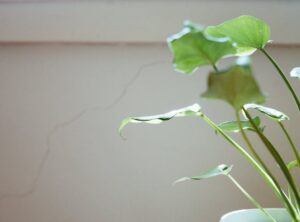Imagine turning your outside area into a lush haven, surrounded by lush vegetation that offers structure, seclusion, and a hint of elegance. Hedges are a flexible option that provides both functional advantages and visual attractiveness. The correct hedges can have a big influence on your landscape, whether your goal is to establish a natural border, add a little formality, or just enjoy the beauty of evergreen foliage all year long.
Assessing Climate and Soil Conditions: Foundations of Success
Understanding the soil and climate in your area is essential to choosing the correct hedge. Since various plants prefer different types of habitats, it’s critical to match your hedge’s growth and endurance to the particulars of your yard. Consider the variations in temperature, humidity, and sunshine your garden received all year. While some hedges do well in hot, dry areas, others prefer the cold, damp conditions of temperate climes. Another crucial element is the quality of the soil. In general, hedges that are planted in soil that drains properly will thrive better since poor drainage can cause problems like root rot. After testing the pH and nutrient levels of the soil, choose plants that can thrive in these circumstances.
Deciding on Hedge Purpose and Function: Defining Roles
Your decision-making process will be guided by your comprehension of the hedge’s function and goal. In a landscape, hedges can be used for various purposes, such as windbreaks, seclusion, boundary definition, and decorative elements. Choose thick, swiftly growing plants like Leyland Cypress or Privet, which can quickly create an impenetrable barrier, if seclusion is your priority. These hedges are great for reducing noise and providing screening, creating a private haven in crowded areas. Think about using decorative hedges for aesthetic reasons. In addition to adding seasonal beauty to your landscape, flowering hedges like hydrangea or viburnum also attract pollinators, which increases biodiversity.
Evaluating Growth Rates and Maintenance Requirements: Balancing Effort and Reward
A hedge’s growth rate and care needs are important factors to consider, especially if you’re looking for low-maintenance solutions or quick results. Quick-growing hedges, like Laurel or Bamboo, can provide the required seclusion and cover in a short amount of time. But because of their quick development, they often need more upkeep, necessitating frequent trimming to keep them in control and preventing them from becoming out of control. Conversely, slower-growing hedges, such as Holly or Boxwood, provide a more regulated growth pattern and lessen the need for frequent upkeep. These plants are perfect for those who want to cultivate more slowly or who want to make elaborate topiary creations.
Choosing Between Evergreen and Deciduous Hedges: Seasonal Dynamics
The choice of deciduous or evergreen hedges has a big influence on your garden’s year-round functioning and attractiveness. Evergreen hedges provide continuous seclusion and covering even in the winter since they keep their leaves throughout the year. Evergreens such as Thuja, Cypress, and Boxwood are popular choices since they keep their rich green look all year round or one can take advantage of the ease of fake hedges. These hedges are perfect for delineating garden areas or as permanent screens. Conversely, deciduous hedges shed their leaves in the autumn, presenting a dynamic display of hues and textures as the seasons change. Bright foliage and flowers are produced in the spring and summer by plants like beech, hornbeam, and hydrangea, which are followed by dramatic bare branches or multicolored leaves in the fall.
Integrating Hedges with Overall Landscape Design: Harmonizing Elements
A well-selected hedge should accentuate and balance your landscape’s overall design. Think about the hedge’s relationship to the existing structures, including the trees, flowerbeds, and architectural details. Choose hedge species that complement your garden’s color scheme, texture, and design elements for a unified effect. For example, rounded hedges like boxwood or privet complement formal, English-style gardens, while soft, blooming hedges like lavender or rosemary can provide a relaxed, Mediterranean vibe. Consider the hedge’s positioning and size with respect to other garden elements. Hedgerows can be used to restrict spaces or serve as a background for plants that are more delicate or colorful.
Conclusion
It’s important to carefully balance a variety of factors when selecting hedges for your outdoor area, including seasonal attractiveness, growth dynamics, practical demands, and architectural harmony. Accept the transformational potential of hedges to improve your outdoor living area and take pleasure in the verdant, lush beauty they add to your yard.


